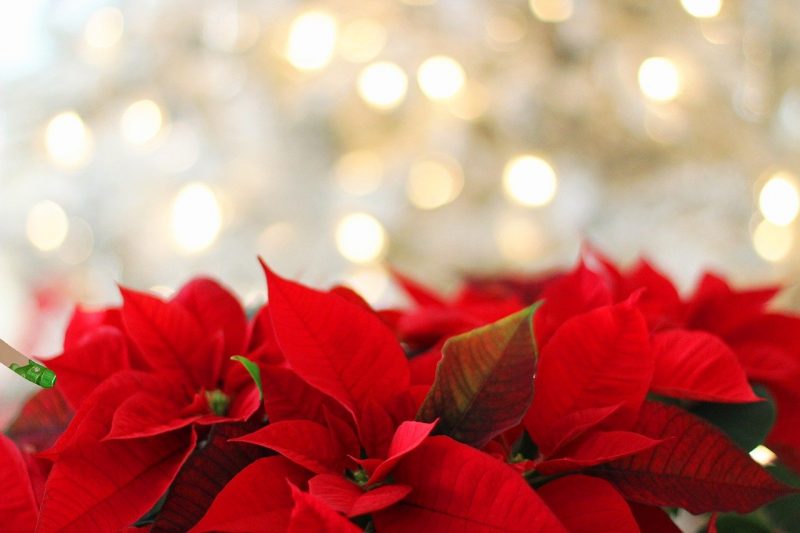You only need two steps to learn how to grow poinsettia plants from cuttings. Seeing a poinsettia plant is a nostalgic reminder of holidays, but did you know that these plants can rebloom the following winter and bloom each year? With this in mind, learning how to propagate them from cuttings will let you have more plants that are exact copies of your favorites.
More so, poinsettias are very rewarding as long as you take care of them properly. After all, the length of their service depends on managing them, which includes being consistent from propagation to the end of the season. You can use the greenhouse to house them and adjust to ideal conditions to create healthy parent plants or grow the cuttings themselves.

Easy Guide On How To Grow Poinsettia Plants From Cuttings
Before you start growing poinsettia plants from cuttings, New Mexico State University mentioned a critical consideration for gardeners. You will need to check if your plant has a patent and if so, remember that it’s illegal to propagate them. Once you’re sure that your plant is not patent-protected, you can safely gather cuttings and grow new plants.
Step #1. Taking cuttings
The best time to start propagating poinsettia cuttings is in summer when the plant begins producing new shoots. These new shoots at the base are excellent for propagation, but wait until they are around 5 inches long. More so, your parent plant should be healthy and stress-free, and the stems themselves have no signs of infections and damages.
You can prepare the parent poinsettia plant by cutting back the stems after the flowers fade. This will help new branches to develop as the old ones are not useful for propagation. Place the plant in a bright and warm location, and ensure moisture.
Use a sharp and sterilized pruning shear to take a 4-inch stem from the base. Ideally, you want the cutting to have some leaves at the tip. Much like with other plant cuttings, you want to remove the leaves at the base, so the node is exposed, and then dip the cutting’s end in rooting hormone to help with establishment.
Step #2. Planting
As mentioned earlier, poinsettias might appreciate the benefits of using a greenhouse. Their ideal zones are 9 to 11, but growing them indoors will protect them from harsh cold conditions. Additionally, growing poinsettia from cuttings would be easier if they are in a location that is warm and bright, and this is easy to achieve in the greenhouse.
Before taking the cuttings, it’s best to prepare the containers with the medium for the process to be continuous. You can use a moist mix of sand and perlite in a plastic pot and press a cutting inside. The bottom should have ⅓ of it buried, and stabilize it upright with the medium.
To help maintain moisture, you can cover the pot with a clear plastic bag that shouldn’t contact the plant. However, make sure to check still and mist the cuttings daily to help them root. If there is resistance at the base within three weeks, you can remove the cover and transplant in potting soil.
Use the greenhouse to provide a slightly humid yet bright environment for the transplants and continue watering them. You can then plant poinsettias in fall in a moist bed with medium shade. However, remember to transfer them indoors when the temperature is freezing.
Caring For Poinsettia Plants
What makes it possible to have poinsettias blooming for extended periods is proper care. You might be impressed with these plants that will remain colorful until March, given that the environment isn’t extreme. You can protect the poinsettias from freezing temperatures using a greenhouse, which is a good option for those in frigid regions.
The ideal environment for these plants is somewhere that doesn’t receive chilly air or drafts but has slightly humid air. They’ll grow stronger with light, but be wary not to expose them in direct sunlight. More so, maintain moisture and drainage on its medium and fertilize monthly during the active growing season.
What are the common problems in growing poinsettias? Always be on the lookout for pests, including spider mites and thrips, especially in the greenhouse. With proper monitoring, you can address them quickly and prevent spread.
If you have to use pesticides, Michigan State University has chemical recommendations safe for poinsettias. The other potential problems in poinsettias such as bacterial soft rot, powdery mildew, and botrytis blight are also easily preventable with management practices. If they indeed arise, you can adjust the environment’s conditions and do the specific treatment for the disease.
Conclusion
Holiday or not, the showy personalities of poinsettias will surely make your garden lively. If you know how to grow poinsettia plants from cuttings, you can easily create more clones of your favorites. As long as your plant has no patent, this simple propagation method will surely get you in the holiday spirit.
Start by choosing a healthy parent plant and cut new stems. Remove all the lower leaves and dip the cutting in the rooting hormone before planting in a moist medium. You can cover the pot with a plastic bag to maintain humidity and let them establish themselves in the greenhouse.
And voila! With proper care of your poinsettia plants, you can enjoy them for different holidays, not limited to Christmas.
